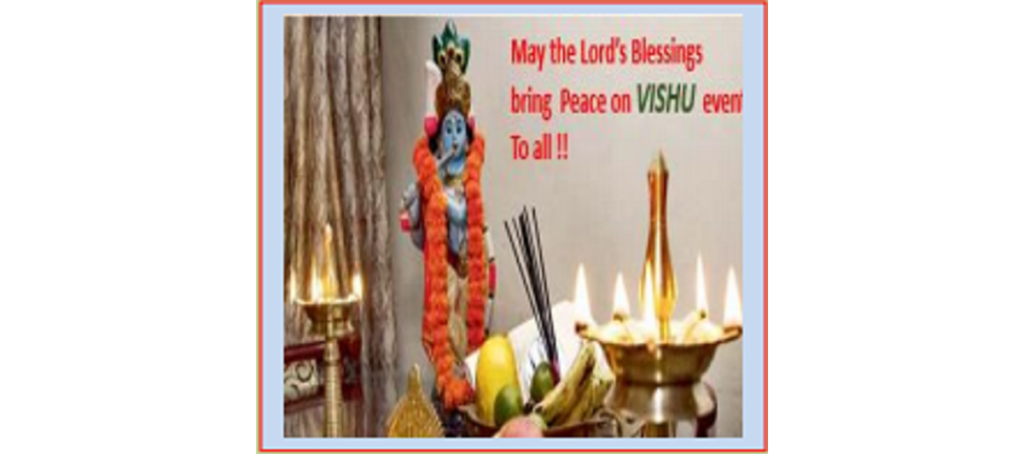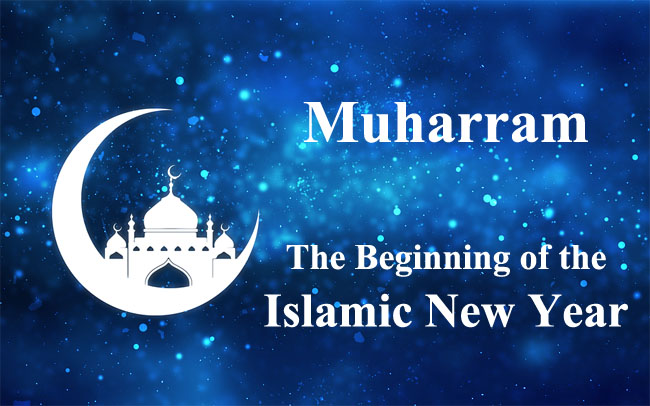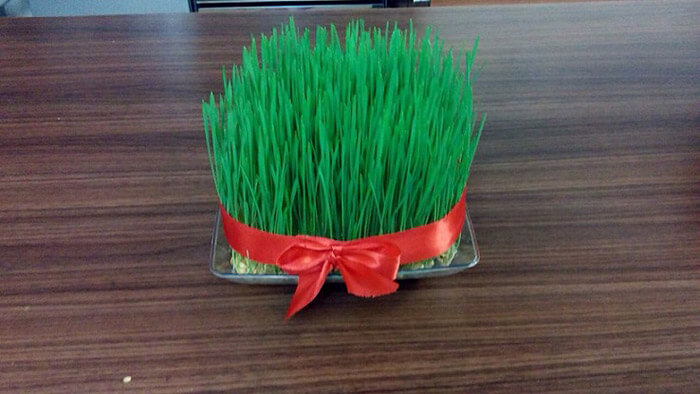15 Regional New Year Festival in India

New Year is celebrated on 1st January in almost every part of the world as per the Christian tradition, where the Gregorian calendar is followed. Most of the countries follow the Gregorian calendar with 12 months in a year, the year comes to end on December 31st and began on January 1st and this calendar is the de facto calendar in most countries. Even India uses this calendar along with the Indian national calendar (the Shalivahana Shaka calendar) hence New Year is also celebrated on January 1st.
Different countries observe their traditional or religious New Years Day according to their own customs, sometimes in addition to a (Gregorian) civil calendar. Some of these New Year celebrations in various countries are Chinese New Year, the Islamic New Year, the traditional Japanese New Year, and the Jewish New Year. India and other countries continue to celebrate New Year on different dates.
India is a country where people of various cultures, languages, castes, and religions live together following both solar and lunar calendar systems, and New Year is celebrated as per Vedic time. There are numerous days in a year when the New Year is celebrated. Every state in India celebrates the New Year in its own way, following traditions and customs, and is a part of that particular region exclusively. The Hindu New Year is also known as the Vikram Samvat and all the festivals are based on it.
The regions following Solar Calendar celebrate New Year on Baisakhi in North and Central India, Ugadi in Andhra Pradesh, Rongali Bihu in Assam, Puthandu in Tamil Nadu, Vishu in Kerala, Pana Sankranti in Odisha, and Poila Boishakh in Bengal in the month of the calendar, i.e., Vaishakha. This day generally falls on 14th or 15th April. The regions following Lunar Calendar consider Chaitra to be the first month of the year which falls in the month of March- April. Gujarat celebrates New year’s day after Diwali in Kartik month (October – November).
Here is the list of various New Year Days celebrated round the year in the various Indian States.
Bohag Bihu (बोहाग बिहु) – Assamese New Year

Rongali or Bohag Bihu is the Assamese New year and other regions of the Indian subcontinent, East Asia and South-East Asia, which follow the Hindu calendar and Buddhist calendar. Bohaag Bihu is celebrated on the first day of the first month of the solar calendar known as Bohaag, which coincides with mid-April as per the Gregorian calendar.
It is the first day of the coming year that starts with the ‘Bohag’. Henceforth, the festival is also called ‘Bohag Bihu.’ The festival apart from Bohag Bihu is also referred to as Rangoli Bihu because Rangoli is derived from ‘Rong’ which means happiness and joy in life.
Cheti Chand (चेटी चंद) – Sindhi New Year

Sindhis celebrate the New Year as Cheti Chand or Jhulelal Jayanti (birth) or Dariyalal Jayanti or New Year Day. As per the Hindu Calendar, the Cheti Chand festival is celebrated on the first day of the month of Chaitra. Jhulelal is considered as an incarnation of Lord Varun, God of water. Jhulelal had provided justice to the Sindhi community and saved them from Muslim King Mirik Shah. People from Sindhi Community celebrate the festival with a number of rituals, fairs, feast parties, social gatherings, etc.
Gudi Padwa (गुड़ी पड़वा) – Marathi New Year

People in Maharashtra celebrated the spring-time festival of Gudi Padwa which marks the traditional new year for Marathi and Konkani Hindus in the subcontinent. It is celebrated in and around Maharashtra on the first day of the month of Chaitra, according to the Hindu calendar. People celebrate Gudi Padwa by decorating house floors with rangolis, dancing, and preparation of delicious sweet and savory foods.
Gudhi flags are also erected on the right side of the main entrance of the houses, as a part of the Gudi Padwa celebrations in Maharashtra. The flag consists of bright and colorful silk-scarf-like cloth tied atop a bamboo stick and on the top end of the stick, boughs of neem and mango leaves, along with a garland of flowers is also attached. The stick is capped with a silver or bronze pot or Kalash, which signifies victory or achievement. Gudi, the flag is said to ward off evil and bring prosperity and good luck into the house that it is hoisted outside.
Pana Sankranti (पणा संक्रांति) – Odisha New Year

Pana Sankranti, (Odia: ପଣା ସଂକ୍ରାନ୍ତି) also known as Maha Vishuba Sankranti, is the traditional new year day festival of Hindus in Odisha, India. On this day the sun enters the sidereal Aries or Mesha Rashi. It generally falls on 14/15 April. Maha Visuva Sankranti is the first day of the month of ‘Baisakh’ as well as the solar year. This is also called “Jala Visuva Sankranti” In northern India, it is called “Jala Sankranti“, in southern India “Sakkar Pongal” and in Orissa it is known as “Pana Sankranti“, named after ‘Pana’, the main drink offering specially prepared on this occasion.
On this day a small pot filled with pana or a sweet drink of Mishri and water is hung on a basil (Tulsi) plant. There is a hole at the bottom of this pot that allows the water to fall from the pot, representing rain. The flour of horse gram chhatua, along with banana and curd, is consumed by the people of Odisha after offering it to the Tulsi plant.
Pohela Boishakh (पोइला बैसाख) – Bengali New Year

Pahela Boishakh is our first day of the Bengali Calendar. It is celebrated in Bangladesh, West Bengal, Assam, Tripura. In Bangladesh, it is a national holiday and in India, West Bengal, and Assam it is a public (state) holiday. According to the official amended calendar designed by the Bangla Academy, Pohela Boishakh is usually celebrated on the 14th of April. The Bengali words “pohela” means “first” & “boishakh” means the first month of the Bengali Calendar & “New Year” means “Noboborsho”.
Pohela Boishakh marks the start day of the agricultural season. Usually, on Pohela Boishakh, people bathe early in the morning and dress in fine clothes. They spend much of the day visiting relatives, friends, and neighbors and going to the fair. Traditional handicrafts, cosmetics, agricultural products, toys, as well as various kinds of food and sweets are sold at these fairs. The fairs also provide entertainment, with cockfights, bull races, horse races, bullfights, boat racing, and flying pigeons. Jatra (traditional plays), pala gan, jarigan, sarigan, kobigan, gazir gan, alkap gan and gambhira gan are also entertained in this fair.
Puthandu (पुथंडु ) – Tamil New Year

‘Puthandu‘ represents the Tamil New Year’s Day and it is celebrated in the Chithirai beginning, which is the first month as per the Tamil Calendar. The auspicious occasion of Puthandu is also popularly known as Varusha Pirappu or the birth of New Year and falls on 13th or 14th April according to the Gregorian Calendar. People celebrate the festival full of happiness to bring new opportunities, prosperity, blessings, good health. In Tamil puthandu, neem flowers and mango leaves have been taken and they will do some pachadi in it. This is the symbol of goodness, growth, prosperity for the family.
It is a very auspicious occasion for Tamil people. It is believed that Lord Brahma started the creation of this Universe and Lord Indra visited earth on the day of Puthandu to see contentment and amity. Puthandu is a day of feast festival.
Ugadi (उगादी) – Telugu New Year

Ugadi Festival is the “Telugu New Year” festival for the people of the Deccan region of India. It falls on the Thidi, Chaitra Suddha Padyami. According to the Hindu, Calendar Chaitra is the first month of the new year and Suddha Padyami is the first day of the new year. The term Ugadi came from the Sanskrit word Yugadi, Yuga means to age and Adi are beginning. So Yugadi means the beginning of a new year. According to the Chandramana system (Shalivahana Shaka), Telugu New Year falls on Chaitra Shuddha Prathipade.
Hindu mythology says Lord Brahma, created the universe on Chaitra Shuddha Prathipade. Since then, this day is celebrated as New Year’s Day. On the day of Ugadi people wake up early in the morning do the head baths and wear the new dresses. After they decorate the Temples with different fresh flowers and Mango leaves. The people also decorate their houses and Pooja Mandhirs with flowers, especially Jasmin flowers, and fresh Mango leaves.
Vaisakhi (वैसाखी) – Punjabi New Year

Vaisakhi is also known as Baisakhi marks the Sikh new year and commemorates the formation of Khalsa Panth of warriors under Guru Gobind Singh in 1699. More recently, this festival is also celebrated around the world by the Sikh diaspora. Vaisakhi is a harvest festival of Punjab, or according to the Punjabi calendar, it is the New Year for Punjabi people.
It is considered as the beginning of the New Solar Year as per Hindu beliefs and we often call it “The New Agricultural Year.” The festival is widely celebrated in both rural and urban areas, with huge ceremonial fun and frolic. The foremost reason behind the celebration of this festival is the expression of sentiments of the farmers who cultivate ripened rabi crops. This day is usually observed on the 13th or the 14th day of the month of April and marks the beginning of the month of Vaisakha according to the “Nanakshahi Calendar”.
Vishu (विषु) – Malayalam New Year

Vishu is the Hindu New Year of Kerala is observed on the first day of the Medam month (April – May) of Malayalam Panchang. This festival is also celebrated in Tulu Nadu region in Karnataka and border areas of Tamil Nadu. In some places, Vishu is known as Bisu. Vishu festival also marks the day of Mesha Sankranti or Mesha Sankraman during which the Sun transits to the first zodiac – Mesha Rashi or Aries zodiac.
‘Vishu’ means ‘equal’ in Sanskrit. It marks the period when the sun moves from the southern hemisphere to the northern hemisphere. People clad themselves in new clothes and prepare delicious sadya to celebrate the joy of the day. Firecrackers add charm to the celebrations of the day. There are many festivities and ceremonies associated with Vishu celebrated across the state.
Bestu Varas (બેસતું વર્ષ) – Gujarati New Year

Gujarati New Year, also known as ‘Bestu Varas’, ‘Varsha-Pratipada’, or simply ‘Padwa’, is celebrated each year after Diwali to worship Lord Krishna and the Govardhan Hills. It is the first bright day of Kartik (Kartak sud Ekam). As per the Indian Calendar based on Lunar Cycle, Kartik is the first month of the year and the New Year in Gujarat falls on the first bright day of Kartik (Ekam). So, this day marks the beginning of their new fiscal year.
Gujarati houses are lighted colorfully, people dress up nicely and visit temples. According to legend, Lord Krishna lifted Govardhan Paravat to protect the people of Vraja from heavy rains hence it became a tradition of worshipping Govardhan Parvat and celebrating this day as a New Year. Gujarati New Year is celebrated with immense joy, happiness, and enthusiasm in the entire state of Gujarat.
Losoong (लोसांग) – Sikkimese New Year

Losoong or Sikkimese New Year is one of the most popular and old age festivals of Sikkim, celebrated in the month of December. It marks the end of the harvesting season and the New Year for the people of Sikkim. Losoong is also known as ‘Sonam Losar’ the farmer’s New Year, Chham dance is one of the major attractions of the festival.
Navreh (नवरेह) – Kashmiri New Year

The New Year celebrations of the Kashmiri Pandits are ushered in with Navreh that literally means the new year. Navreh is derived from the Sanskrit word ‘Nava-Varsha‘, meaning New Year. It falls on Chaitra Shukla Pratipada or the first day of the bright fortnight of the month of Chaitra.
There is a customary practice of preparing a plate full of unhusked rice with bread, a small bowl of yogurt, salt, sugar candy, a few walnuts or almonds, silver coin, and Rs 10 note would also do, a pen, a mirror, some flowers (rose, marigold, crocus, or jasmine) and the new panchanga or almanac. Also, one has to keep Kashmiri Jantri (a panchang book that has an account of all the important dates as per Kashmiri tradition).
Hijri (हिजरी)– Islamic New Year

The Islamic New Year, also known as Hijri New Year or Arabic New Year marks the beginning of a new Hijri year. The first day of the year is observed on the first day of Muharram, which is the first month in the Islamic calendar. The month of Muharram is the first month in the Islamic calendar and marks the beginning of the Islamic New Year.
This day commemorates the migration of Muhammad and his followers in 622 from Mecca to Medina, known as the Hijra. The day is celebrated as a cultural holiday, not a religious one. People celebrate the holiday by offering prayers in the mosque. They spend the day with their friends and family members by exchanging wishes, gifts, and relishing traditional meals.
Losar (लोसर) – Arunachal Pradesh New Year

The Tibetan New Year, also known as Losar, is the most important festival on the Tibetan calendar, falling very close to the traditional Chinese New Year. It corresponds to a date in February or March in the Gregorian calendar. The festival season usually lasts for 15 days. Losar means New Year which is derived from two Tibetan words lo and sar which means new and a year respectively. According to the Tibetan calendar, it starts from the first day of the first month to the fifteenth day. Activities are scheduled on a daily basis, but the highlight celebrations fall on the first three days.
Religious activities also play an important part in Tibetan New Year celebrations. During Losar, Tibetans will wear their finest clothes, and visit temples to worship, and offer gifts to monks.
Nowruz (नवरोज़) – Persian New Year

Nowruz marks the beginning of the Iranian or Persian New Year, celebrated by Parsis across India. It is a holy day for Zorastrians and marks the beginning of spring in the Northern Hemisphere. The word Nowruz literally translates to ‘new day’ in Persian. People decorate their houses and wear new clothes on the occasion of Navroz. In India, prominent numbers of the Parsi community still remain in Mumbai and Gujarat, who celebrate Navroz with ardour.
The Parsi community of India observes the new year using the Shahenshahi calendar which does not account for leap years, meaning this holiday has now moved by 200 days from its original day of the vernal equinox. In India, the Parsi New Year is celebrated around 16–17 August.






